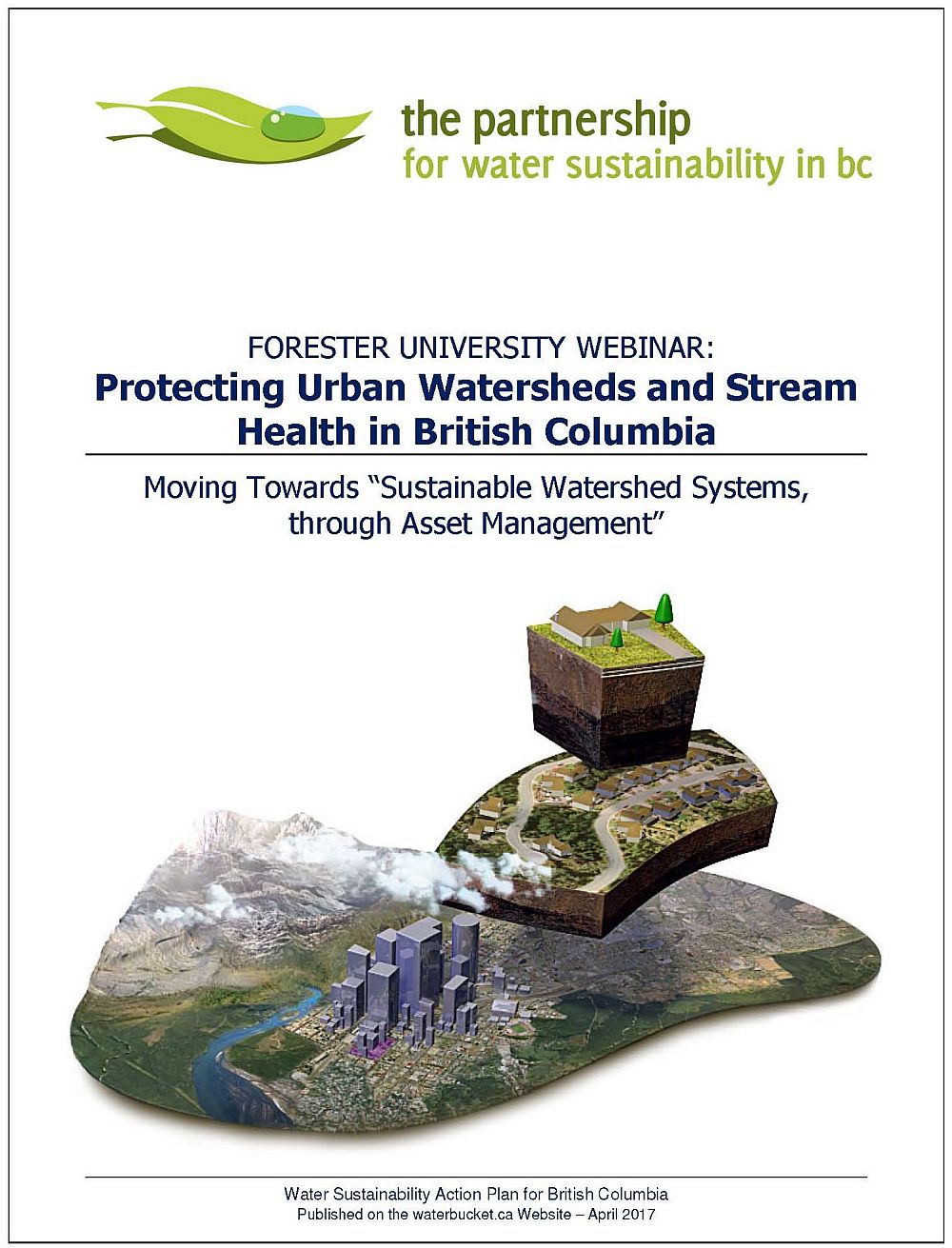Forester University Webcast on Protecting Urban Watersheds and Stream Health in British Columbia (May 2017): “The whole-system, water balance approach simplifies things down to an understanding of the consequences of changes in duration of flow. It is very much about the total numbers of hours per year that streams are subjected to particular streamflow rates,” explained Jim Dumont
Note to Reader:
Located in California, Forester University offers live, educational webinars and on-demand webcasts for professionals in Stormwater, Water Efficiency, Erosion Control, and the public utility sector to earn credits, or to simply learn something new.
Look at the water cycle with fresh eyes to develop and implement new approaches, methodologies and tools
The Partnership for Water Sustainability in British Columbia partnered with Forester University to share, via webinar on May 2nd 2017, the British Columbia innovation and experience that has resulted in the whole-system, water balance approach that is the hydrologic modelling foundation for Sustainable Watershed Systems, through Asset Management. The webinar will be available through May 2020 as a webcast.
This new way of thinking views watersheds as infrastructure assets. This is an important first step towards changing the engineering standard of practice. The desired outcome is a standard of practice that is state-of-the-art and reflects real-world hydrology.
A Webinar That Cannot Be Missed
“ We are delighted to have Kim Stephens and Jim Dumont of the Partnership share British Columbia’s cutting-edge continuous simulation model, known as the Water Balance Methodology, in their upcoming, featured webinar,” stated Emily Shine, the manager of Forester’s webinar program.
We are delighted to have Kim Stephens and Jim Dumont of the Partnership share British Columbia’s cutting-edge continuous simulation model, known as the Water Balance Methodology, in their upcoming, featured webinar,” stated Emily Shine, the manager of Forester’s webinar program.
“At Forester University, we aim to position ourselves at the forefront of innovation in rainwater management and green infrastructure, and that is why we are calling Water Balance Methodology a webinar that cannot be missed.”
“Water Balance Methodology nicely complements Andy Reese’s annual Voodoo Hydrology webinar series, one of the most popular in the Forester curriculum.”

About the Water Balance Methodology
“Watershed protection starts with an understanding of how water gets to a stream, and how long it takes,” stated Jim Dumont, principal presenter for the webinar.
 “The Water Balance Methodology allows water resource practitioners to examine how the watershed hydrology has been affected by development, and how this impacts on the condition and function of natural streams.
“The Water Balance Methodology allows water resource practitioners to examine how the watershed hydrology has been affected by development, and how this impacts on the condition and function of natural streams.
“The innovation of the Water Balance Methodology is in the way it integrates and applies standard scientific and engineering principles to address these components in ways which are not typically applied in planning and design of municipal infrastructure.”
Webinar Overview
“In the webinar, we begin by examining how the protection of watershed and stream health in the urban environment ultimately depends on maintaining the natural proportion of rainwater entering streams via three pathways: overland runoff, shallow interflow and deep groundwater flow.
“We explore how the Water Balance Methodology provides an effective way to assess potential impacts resulting from urban development, by allowing a modeller to accurately mimic streamflow and duration in urban infrastructure design.
“We then jump into how optimizing the size and operation of mitigation facilities in the model can be used to demonstrate the effectiveness of the mitigation plan in protecting the receiving stream.
“Finally, we analyze how this approach provides a cost-effective methodology for creating watershed plans with optimized and effective mitigation facilities for a minimum total cost,” concluded Jim Dumont.
To Learn More:
Download FORESTER UNIVERSITY WEBINAR: Protecting Urban Watersheds and Stream Health in British Columbia



